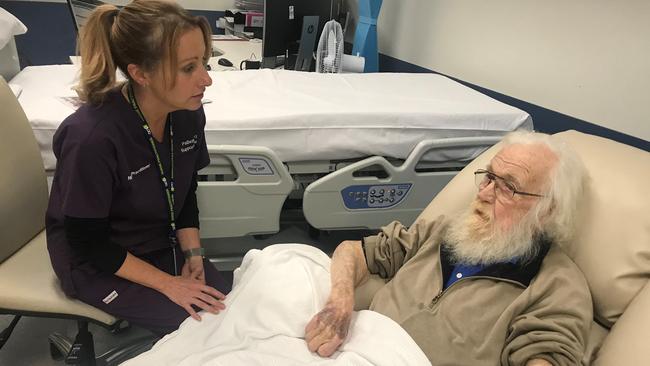Coronavirus: Dying at home lift ‘to save $450m’
Research has revealed more than $450m could be saved if funding for at-home end-of-life services was boosted.

There are fresh calls to overhaul palliative care after research revealed more than $450m could be saved if funding for at-home end-of-life services was boosted and a national strategy implemented.
The KPMG report says that an annual investment of $365m will bring Australia’s palliative care system “up to speed” by ending underfunded at-home care and “token” services that are administered too late.
Palliative Care Australia chief Rohan Greenland said the investment would not only save taxpayer money but also improve the quality of end-of-life services.
“As the population ages and grows and people are living longer but with more chronic disease, we are really facing a tsunami of palliative care cases,” Mr Greenland said.
“Australia needs to look at doing this simply on economics alone, but it’s just wonderful that we are actually going to achieve better health and social outcomes as well.”
Although the coronavirus pandemic put a “great deal of pressure” on people with terminal conditions, it had also highlighted opportunities to improve palliative care, he said.
“During the COVID-19 situation, I think it’s true to say that the health systems, groups and taskforces that have been put together have embraced palliative care as a critical part of the (healthcare) process,” Mr Greenland said.
“We are really keen to see palliative care embraced as a fundamental part of the health system and not just something on the fringe.”
Palliative care nurse practitioner Kate Reed, who has worked in the sector for 10 years, said the COVID-19 pandemic had forced different healthcare units to work more effectively to ensure patients received high-quality care.
“There are innovative models of care that we have been able to make work during this time that have seen real a positive outcome and I think that we will take those forward,” Ms Reed said.
“It’s been a great learning for us all in co-operation and advocating for patients has increased dramatically by nurses in particular, as well as the medical team.
“There is no us and them — we are all working together to really try and improve things.”
The analysis found the annual cost of death in Australia is $7.8bn a year, with more than half swallowed by hospital expenses.
The report suggested four main interventions to improve the quality of palliative care in Australia and save taxpayer money.
It said annual investments should be made of $240m into improving timely access to at-home palliative care, $75m into specialist palliative services within aged-care facilities, and $50m to expand end-of-life services in hospitals. It suggested a national palliative care commissioner and agreement be implemented so patients and carers don’t have to deal with fragmented regulations, as well as “complex funding models”.
There is currently little co-ordination between state, federal and local stakeholders and palliative care providers, the report said.
It also said funding for palliative care services — where state and territory governments apply different end-of-life policies — should be reformed to ensure equal access to individual palliative care needs.




To join the conversation, please log in. Don't have an account? Register
Join the conversation, you are commenting as Logout